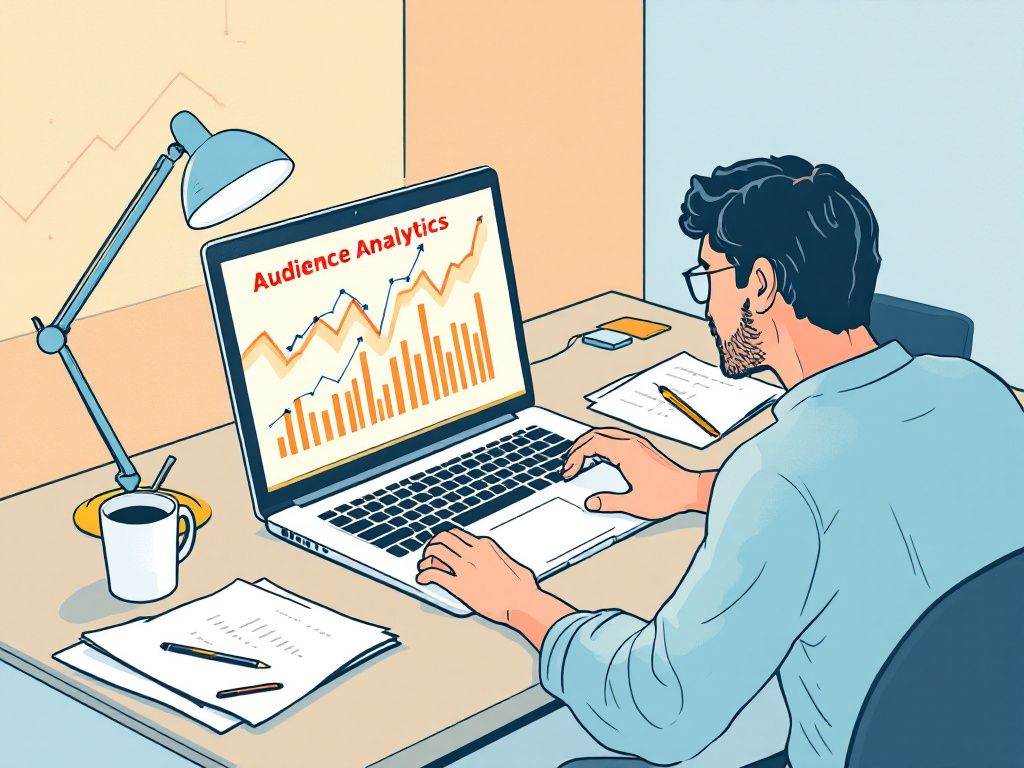Master Target Audience Identification for Authors

Master Target Audience Identification for Authors
Did you know that 80% of new authors struggle to find their target audience? This challenge often leads to misaligned marketing efforts, poor sales, and frustrated writers. But here's the good news: identifying your target audience isn't about guesswork—it's a systematic process that any author can master. At ManuscriptReport.com, we've analyzed data from thousands of authors to develop a comprehensive framework for audience identification.
Table of Contents
- Understanding Reader Demographics
- Research Methods and Tools
- Creating Reader Personas
- Marketing Channel Selection
- Testing and Refinement
- Case Studies and Success Stories
Understanding Reader Demographics
Reading preferences and buying behaviors vary significantly across demographics. Young adults (18-24) gravitate toward digital formats and social media influence, while mature readers (46+) often prefer physical books and show strong author loyalty. The middle group (25-45) demonstrates the most format flexibility, balancing between digital and print based on convenience.

Genre expectations also shape audience characteristics. Romance readers (typically 84% female, aged 30-54) seek different experiences than science fiction enthusiasts, who tend to be early technology adopters. Mystery readers show high sub-genre loyalty, while literary fiction attracts readers with higher education levels.
Reading habits further define your audience. Commuter readers favor shorter chapters, evening readers enjoy immersive experiences, and weekend readers tackle complex narratives. Understanding these patterns helps shape both content and marketing strategies.
Research Methods and Tools
Effective audience research combines both primary and secondary data. Primary research through reader surveys, social media analysis, and direct engagement provides immediate feedback. Tools like ManuscriptReport.com can help aggregate this data, providing actionable insights about reader preferences and behavior patterns.
Secondary research through market reports, competitor analysis, and industry statistics offers broader context. Nielsen BookScan data, publishing industry reports, and bookseller statistics reveal market trends and opportunities. Analyzing successful books in your genre uncovers effective marketing approaches and reader engagement strategies.
Creating Reader Personas
A well-crafted reader persona combines demographics (age, gender, education, income, location), psychographics (preferences, entertainment choices, values), and behavioral patterns (buying habits, reading frequency, format preferences). Here's an example:
"Professional Thriller Reader Sarah" represents a 35-year-old urban professional who reads during commutes and lunch breaks. She prefers psychological thrillers with female protagonists, purchases both ebooks and audiobooks, and discovers new titles through Goodreads and BookBub. Fast-paced plots and surprising twists drive her reading choices.
Marketing Channel Selection

Your marketing strategy should align with your audience's habits. Digital channels include social media platforms (Instagram for visual storytelling, Twitter for industry updates, Facebook for community building, and TikTok for #BookTok engagement), email marketing (newsletters and automation), and online advertising (Amazon, Facebook, and BookBub ads).
Traditional channels remain valuable through bookstore relationships, library events, reading groups, literary festivals, and print media coverage. The key is selecting channels where your specific audience actively engages.
Testing and Refinement
Data-driven decisions require consistent monitoring and analysis. Track website traffic, social media insights, email metrics, and sales data. A/B test your book covers, blurbs, price points, and marketing messages. Analyze reader reviews across platforms and monitor sales patterns to identify trends and opportunities.
Success Story: Audience Research in Action
Let's look at how audience identification transformed one author's career. L.K. Evans, a historical fiction author, initially struggled with marketing her Tudor-era novels. Her books, while well-researched and engaging, weren't reaching the right readers. Here's how she turned things around through systematic audience research:
Initial Situation
- Monthly book sales: Average 50 copies
- Marketing spend: $200/month on generic Facebook ads
- Social media: Scattered presence across platforms
- Email list: 200 subscribers, 15% open rate
The Research Process
Evans conducted extensive reader surveys and analyzed her existing readership data. Key findings revealed:
- 78% of her engaged readers were women aged 45-65
- 92% were already members of historical reenactment or history discussion groups
- Most discovered new books through specialized history podcasts and Facebook groups
- They valued historical accuracy over romance subplots
- Many were interested in the daily life aspects of historical periods
Strategic Changes
Based on these insights, Evans:
- Shifted her marketing to history-focused Facebook groups and podcasts
- Started a blog series about Tudor-era daily life, backed by her research
- Created a specialized email newsletter focusing on historical insights
- Developed relationships with historical societies and museums
Results After Six Months
- Monthly book sales increased to 300+ copies
- Marketing ROI improved by 240%
- Email list grew to 2,000 subscribers with 45% open rate
- Established partnerships with three historical museums
- Invited to speak at historical fiction events
This real-world example demonstrates how targeted audience research and data-driven decisions can transform an author's career. Evans' success came not from trying to appeal to everyone, but from deeply understanding and serving her specific audience's interests and needs.
Conclusion
Understanding your target audience requires ongoing effort and refinement. Start with thorough research, create detailed reader personas, and continuously test and adjust your approach. Tools like ManuscriptReport.com can streamline this process, providing data-driven insights to guide your decisions.
Action Steps
- Create your first reader persona
- Join relevant online communities
- Set up audience tracking
- Plan your first A/B test
Remember: successful authors don't try to appeal to everyone—they excel at serving their specific audience exceptionally well.
Related Articles

6 Essential Book Marketing Strategies for Romance Novels
Discover 6 proven strategies to market your romance novel effectively and boost sales.

7 Essential Book Giveaway Strategies to Build Loyalty
Discover 7 essential book giveaway strategies to boost reader loyalty and engagement.

AI Keyword Research for Books to Boost Sales
Unlock your book's potential with AI keyword research for books. Learn how to find reader-focused keywords and integrate them to dominate digital bookshelves.